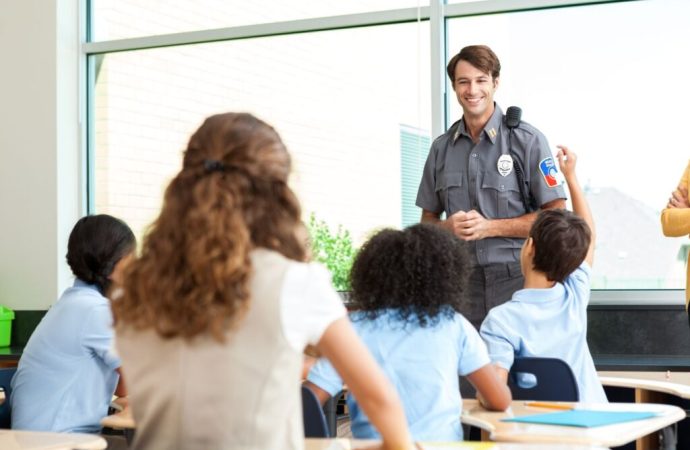. Introduction to Emergency Preparedness in Security Roles In the world of private security, preparation isn’t just important—it’s essential. Emergencies can strike without warning, and how a security guard reacts can mean the difference between chaos and control. Whether protecting a hospital, office complex, or school, a well-trained security guard must follow specific protocols to
. Introduction to Emergency Preparedness in Security Roles
In the world of private security, preparation isn’t just important—it’s essential. Emergencies can strike without warning, and how a security guard reacts can mean the difference between chaos and control. Whether protecting a hospital, office complex, or school, a well-trained security guard must follow specific protocols to ensure the safety of everyone on the premises.
A thorough understanding of emergency response protocols equips security professionals with the confidence to act swiftly and correctly. These procedures form the backbone of a security guard’s duties during any crisis.
2. Understanding the Emergency Response Hierarchy
Security guards don’t operate in isolation during emergencies. Clear command structures help streamline response efforts and eliminate confusion. Typically, the security supervisor or shift manager takes charge, ensuring tasks are delegated efficiently.
Cooperation with law enforcement, emergency medical teams, or fire departments is critical. Guards must know when to escalate situations and how to transition command to first responders. Mutual understanding enhances safety and response speed.
3. Types of Emergencies Security Guards Commonly Encounter
Security personnel encounter a wide variety of emergency scenarios:
Natural Disasters
Events such as earthquakes, floods, and storms demand quick decision-making. Guards should know evacuation zones and emergency shelter points.
Fire and Smoke Incidents
In fire scenarios, knowing alarm systems, exits, and extinguisher locations is vital. Evacuating people safely is a top priority.
Active Threats and Armed Intruders
In rare but severe cases like armed intrusions, guards must initiate lockdown protocols, alert law enforcement, and ensure minimal exposure to harm.
Medical Emergencies
From heart attacks to injuries, medical events require calm, fast action. Guards must be trained in basic life support and know when to call paramedics.
4. The Importance of Site-Specific Protocols
One-size-fits-all solutions rarely work. Each facility has its unique risks and layout. For instance, hospital security services require special protocols due to vulnerable patients and medical equipment. Learn more at https://securityguardservices.com.au/services/hospital-security-services/
Conducting pre-event risk assessments and familiarizing yourself with the location can significantly reduce response times during actual emergencies.
5. Communication Protocols During a Crisis
Clear and controlled communication is paramount in emergencies.
Internal Communication Among Security Personnel
Use radios or communication apps to coordinate with your team. Maintain concise and professional language to avoid misunderstandings.
Communicating with the Public and Authorities
When engaging the public, give clear, calm instructions. If working with emergency responders, provide them with quick summaries and access to the scene.
6. Evacuation and Lockdown Procedures
Knowing when to evacuate versus when to initiate a lockdown can save lives.
Key Differences Between Evacuation and Lockdown
Evacuation involves guiding people out of danger, often during fires or floods. Lockdowns, used during active threats, aim to keep people safe by securing them in place.
Ensuring Safe and Orderly Execution
Lead by example. Use authoritative voice commands and direct people to the nearest exits or safe zones. Avoid causing panic.
7. Medical Emergency Response Protocols
Security guards are often first on the scene in a medical crisis.
First Aid and CPR Readiness
Every guard should be trained in basic first aid, CPR, and AED use. These skills can sustain life until medical professionals arrive.
When and How to Call for Medical Help
Recognize the severity of symptoms. Notify emergency services immediately when there’s loss of consciousness, severe bleeding, or breathing issues.
8. Fire Safety and Response Actions
Fire emergencies escalate rapidly. Guards must know how to contain and report them quickly.
Fire Alarm Procedures
When a fire alarm activates, guards should confirm the threat, alert occupants, and begin evacuation. Use public announcement systems if available.
Coordinating with Fire Departments
Direct responders to fire panel locations and access points. Share building maps if needed. Quick cooperation saves time and lives.
9. Handling Threats and Suspicious Activity
Security guards are often the first to detect unusual or threatening behavior.
Identifying and Reporting Suspicious Behavior
Look for loitering, abandoned packages, or erratic conduct. Keep detailed notes and alert supervisors or law enforcement.
Engaging or Detaining Suspects Safely
If necessary, engage only within the scope of your authority. Use verbal de-escalation techniques and avoid physical confrontation unless trained to do so.
10. Post-Incident Reporting and Documentation
What happens after the emergency is just as important as the response itself.
Creating Accurate and Timely Reports
Document all events in chronological order. Include witness statements, actions taken, and times. This information aids investigations and insurance claims.
Legal and Organizational Follow-Ups
Follow up with supervisors and HR. You may be required to participate in legal proceedings or conduct debriefings to improve protocols.
11. Regular Training and Emergency Drills
Training is never a one-time event in security.
Importance of Simulation Exercises
Drills help staff rehearse responses, identify weaknesses, and build confidence. Schedule them quarterly or as required.
Continuous Learning and Skill Upgrades
Stay updated on new threats and technologies. Attend workshops or obtain certifications to keep your skills sharp. For more details on training standards, visit https://securityguardservices.com.au/
12. Leveraging Technology for Emergency Response
Modern tools can significantly improve emergency responses.
Surveillance Systems, Apps, and Communication Tools
Use security cameras, mass notification apps, and GPS tracking to maintain situational awareness during a crisis.
Real-Time Data for Faster Decision-Making
Integrated systems can notify guards of movement patterns, access point breaches, or fire hazards in real time—enabling faster, more informed decisions.
















